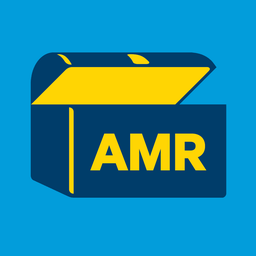





Same guy that makes SponsorBlock, so there’s a decent chance this will have an API and could be worked into YouTube Revanced like SponsorBlock is.


Michael Reeves approves
Smaller circle inside “what people actually understand”, “what people actually care about”.


My guess on what is happening:
The app makes a temporary copy of the settings data when the settings page is opened. The settings UI elements are connected to the temporary data. When the user clicks save, the app overwrites the actual settings data with the temporary data, but if they exit without saving the temporary data is discarded.
The blocklist settings page interacts with the actual settings data directly and thus doesn’t need to be saved, but the blocklist is also stored in the temporary settings data; saving overwrites the changes the user just made with the cached version from before they opened settings.
Personally I would prefer that the save settings button be done away with completely and all settings changes be effective as soon as they are made. This would be far more intuitive for the user and is how it works in pretty much every other mobile app I’ve used.
Especially now that there are settings subpages, it is unclear whether using the save button in a subpage saves all the settings or just the one on that subpage, and whether or not using the save button on the main page saves the settings in the subpages as well.


*leek
Edit: it’s even in the URL


I have no doubt people will be able to hack it. What I’m saying is there is no way it could be hacked without the company finding out and forcing you to return it or pay up. When you sign up you have to give them your personal information and credit card. If you disconnect it from the Internet, filter its Internet traffic, or modify it in any way they will tell you to return it and if you don’t return it they will charge the credit card.
From their terms of service:
In order to use the Product and Services, You will:
(a) Use the Product as the primary television in Your household;
(b) Keep the Product connected to WiFi and internet; and
© Not use any software on Your WiFi network that with advertising blocking capability.
(d) Not make physical modifications to the Product or attach peripheral devices to the Product not expressly approved by Telly. Any attempt to open the Product’s enclosure will be deemed an unauthorized modification.
If we discover that You are not abiding by the requirements above or have disconnected the Product from an internet connection or WiFi for more than short periods each month, You will no longer be able to use the Service and You must return any Products in your possession to Telly. Failure to return Products to Telly will result in Telly charging the credit card on file.


No, the maker has stated they have measures in place to detect any tampering, and that if you tamper with the device, fail to connect it to the Internet, or do not use it frequently they will make you return it or pay for it.


They have said that they can’t stop people from doing that, but that the settings menus, such as the input switcher, will be on the bottom screen.


The settings menus (input switcher, etc) will be on it. Also it will collect data on anything you view using the main screen (HDMI input, etc) regardless.


They have stated they have measures in place to detect anyone trying to do that and will require them to return the TV or pay for it.


Does it work with password manager apps like Google keyboard does?


This makes Breezewood is one of the worst case examples of this kind of development. When explaining something it helps to use an extreme example, so I’m not saying people shouldn’t use the photo, but it’s worth keeping the perspective that that image is literally as bad as it gets.
I will say it is the worst place to be a pedestrian that I have personally experienced. Four lanes of constant heavy traffic with no sidewalks or pedestrian crossings.
The photo was taken near 39.998760,-78.242210 if you want to look it up on your map of choice.


That same photo of Breezewood PA that everyone uses.
Yes the US is ugly but that photo is of an extremely unique situation. This is the only place in a 2000-mile-long freeway where there are traffic lights, so of course businesses have taken advantage of that. It’s not a town, it’s basically a truck stop.
You need to link to the image itself, not the imgur page:
This 
will look like this:

This: 
will look like this:
After reading the article it is clear to me that Meucci made precursors to the electromagnetic telephone but did not actually invent the modern version as popularized by Bell.
There is no solid evidence for him having created the device or even described how it was created before Bell. He experimented with a bunch of similar things, and filled a patent caveat that described the general concept (i.e. sending voices over a wire using electrical current), but it contained no details as to the actual mechanism. All his descriptions of how he created the device were made years after he claimed to have built it, and after Bell’s version was widely known.
Indeed, topograpgically it is not a hole.